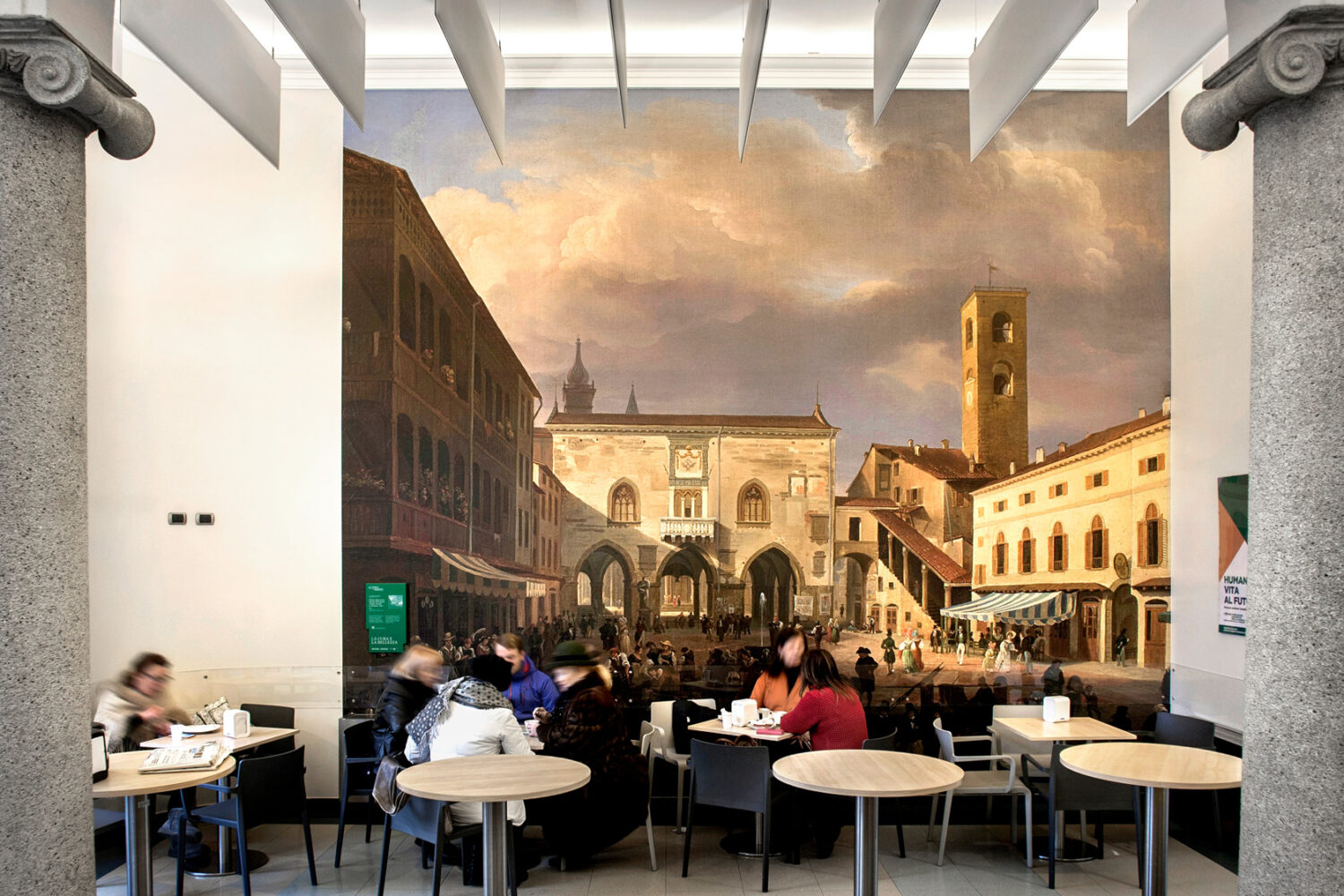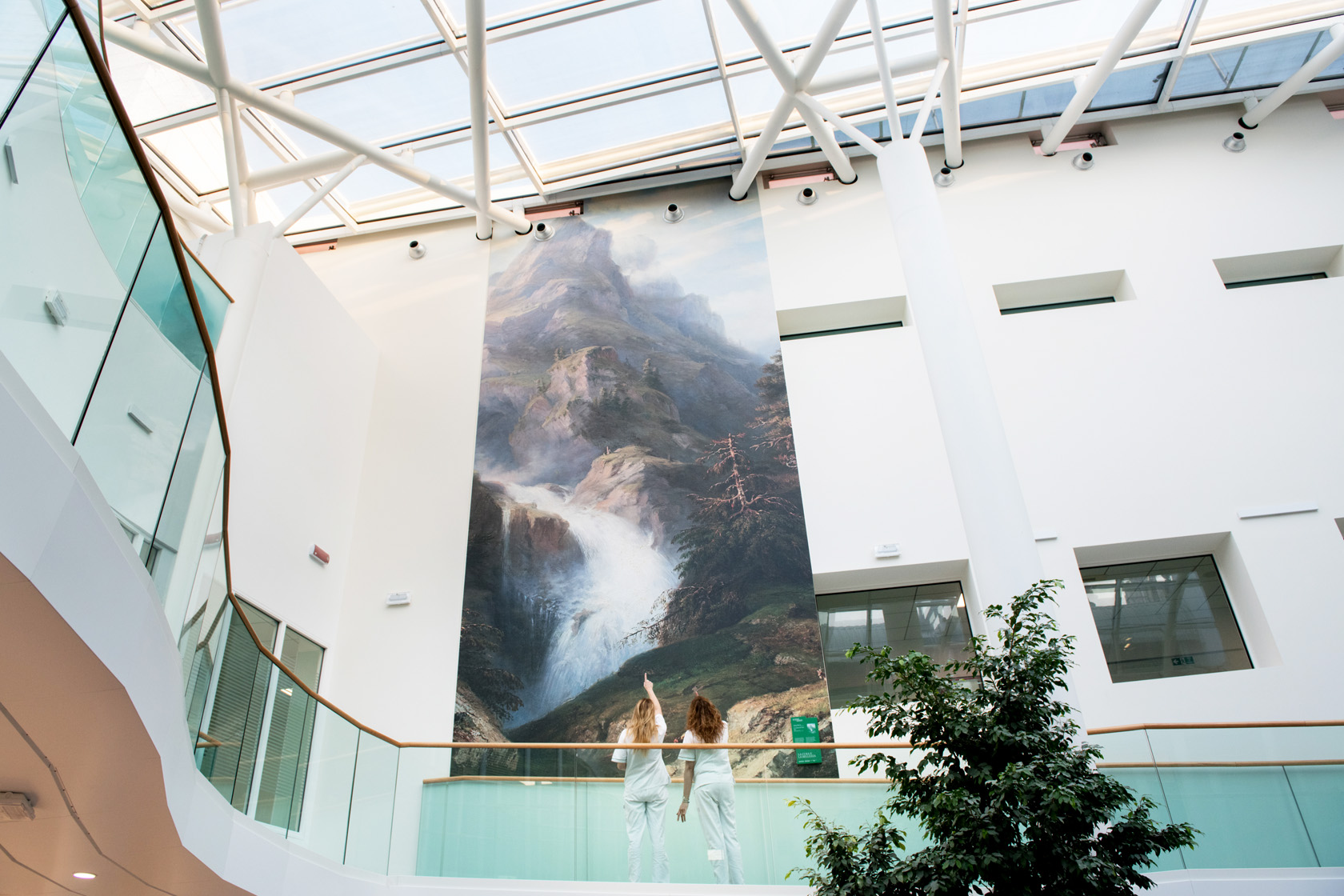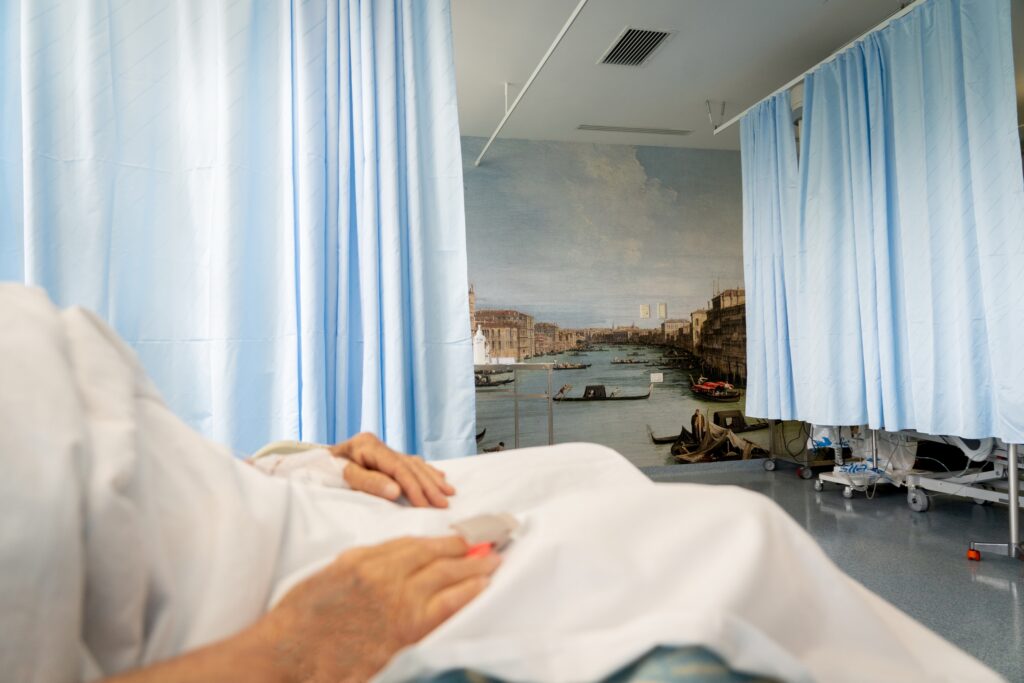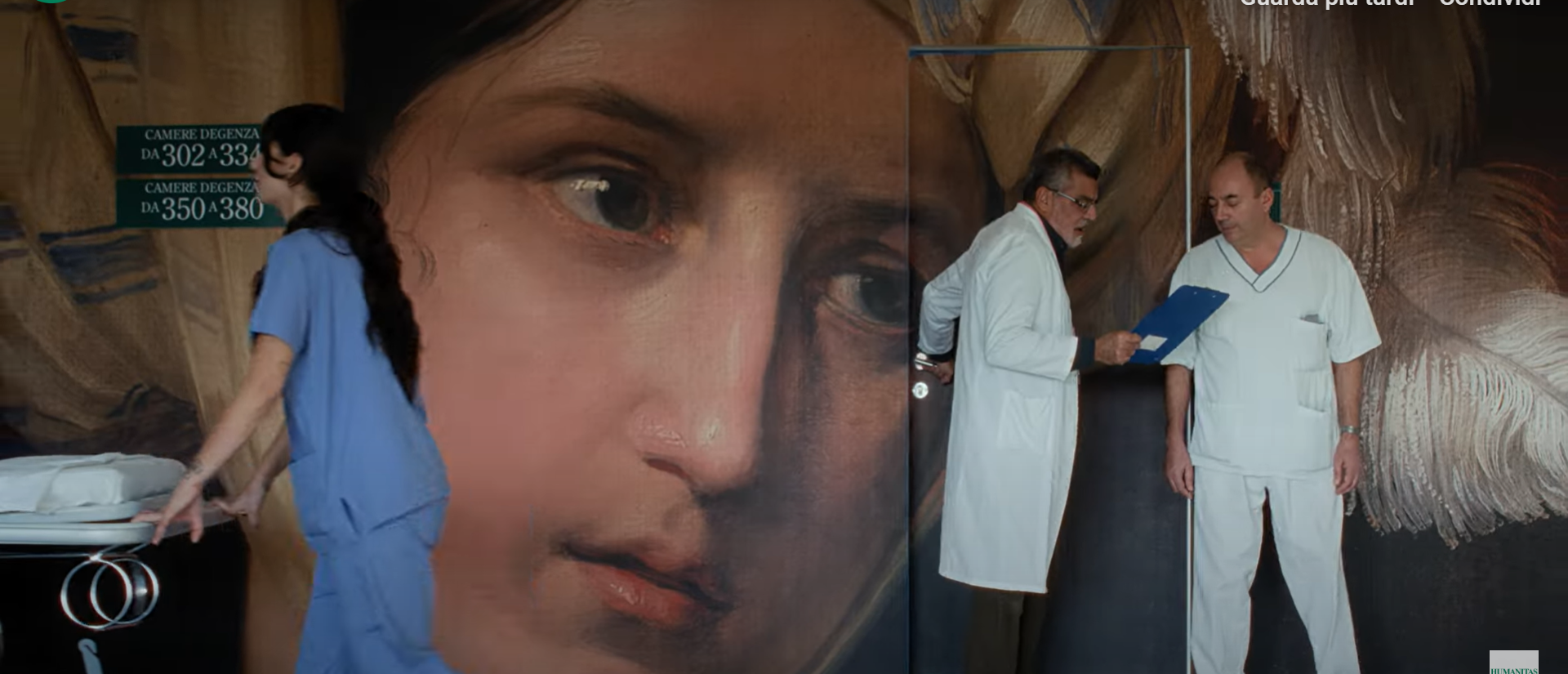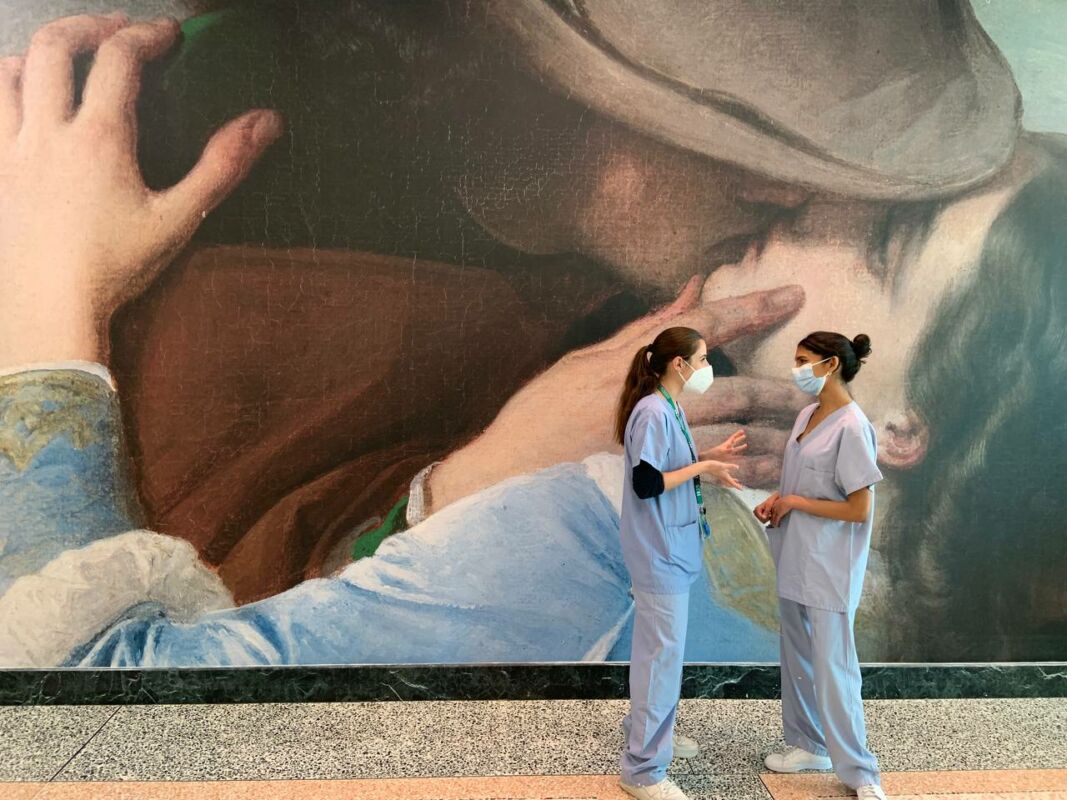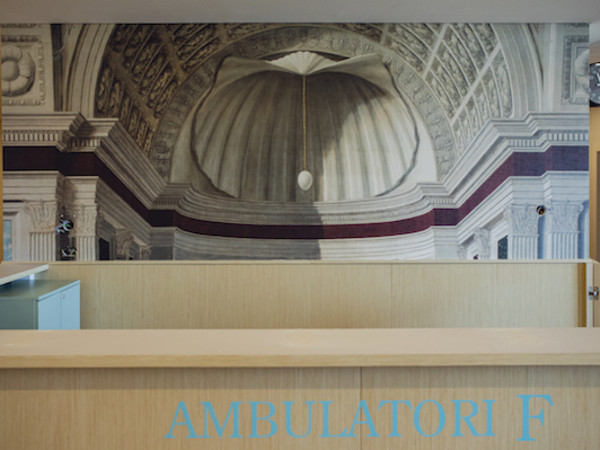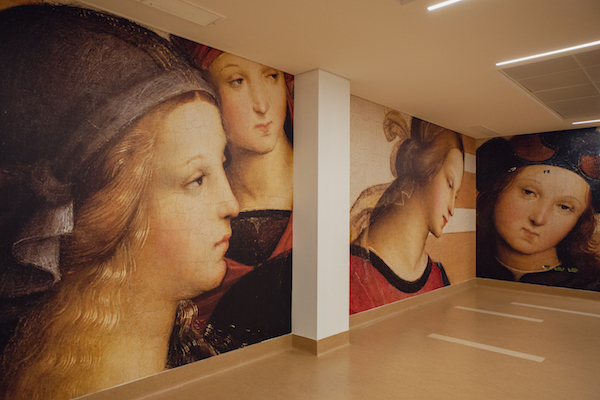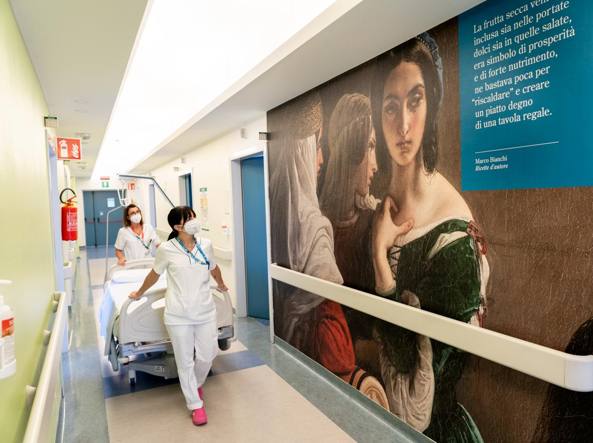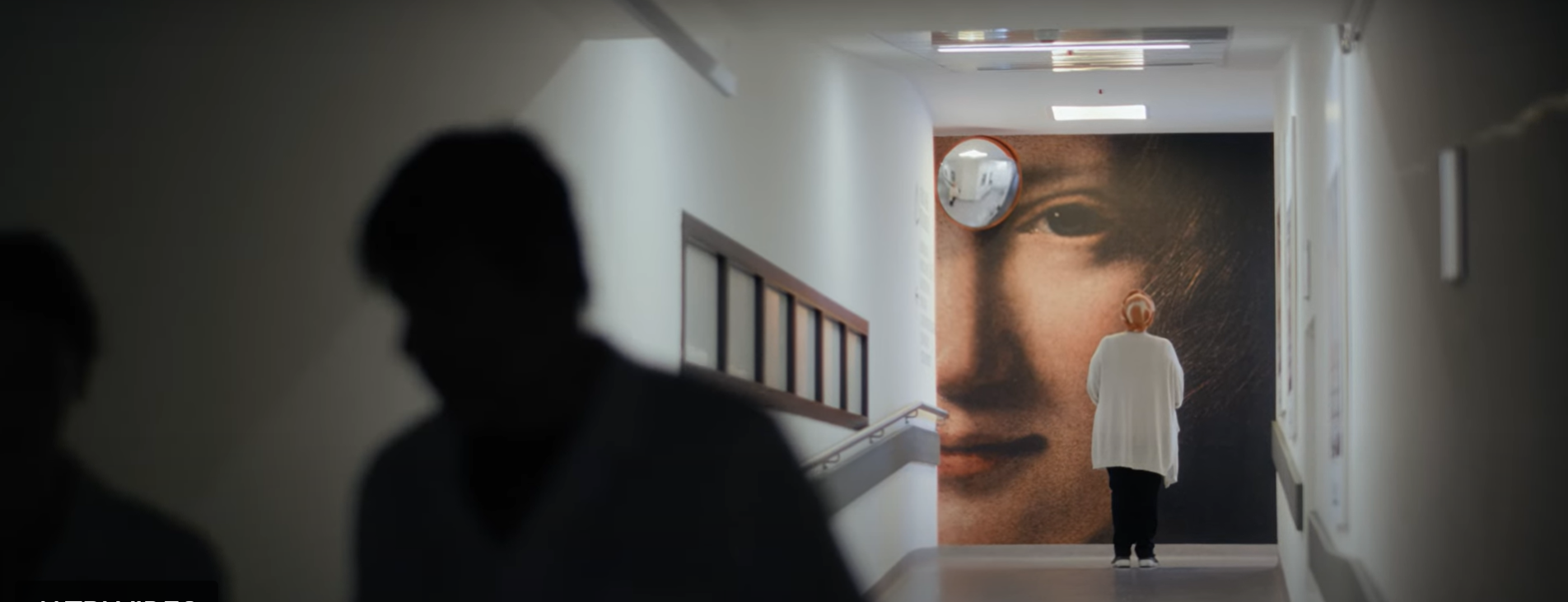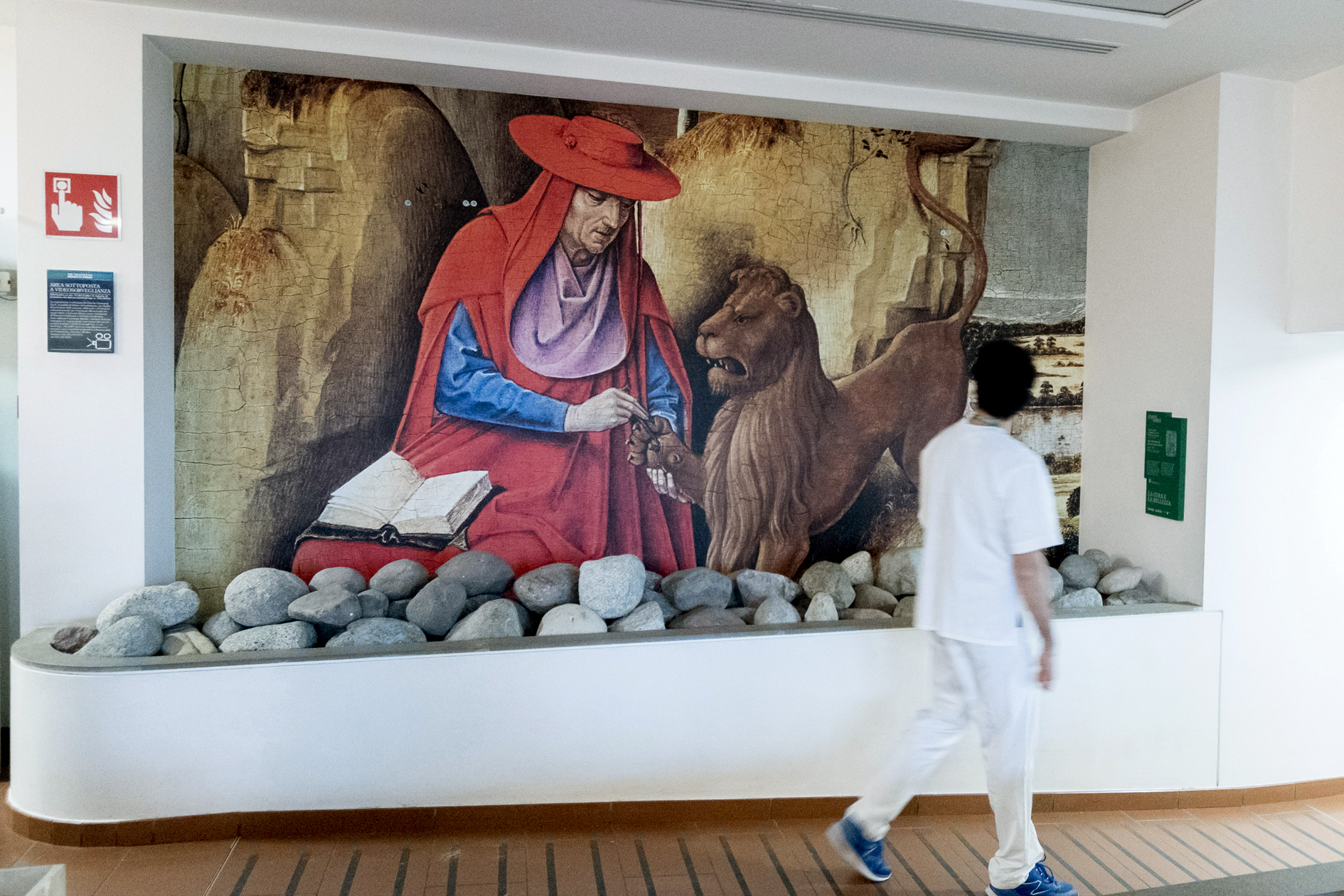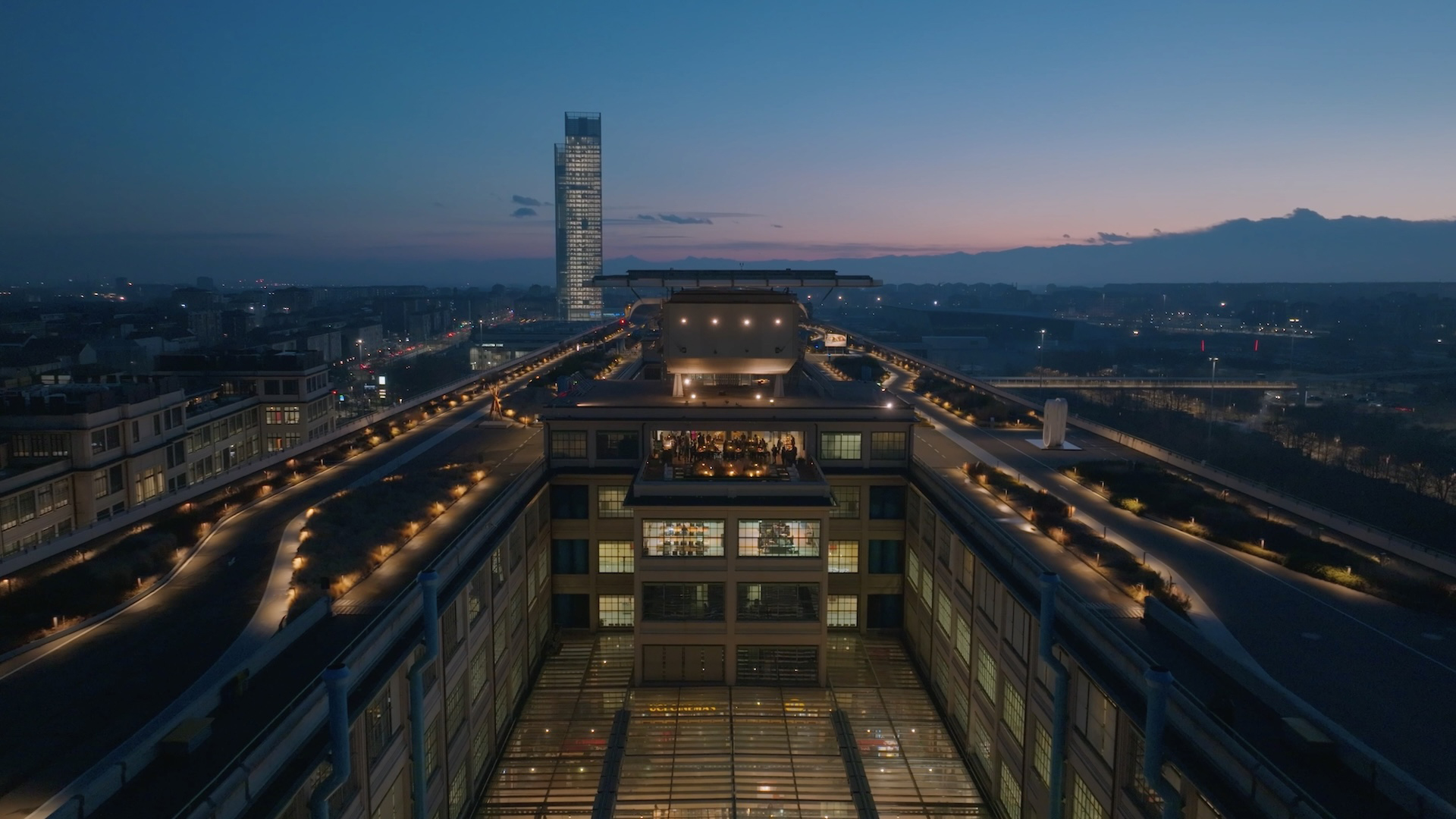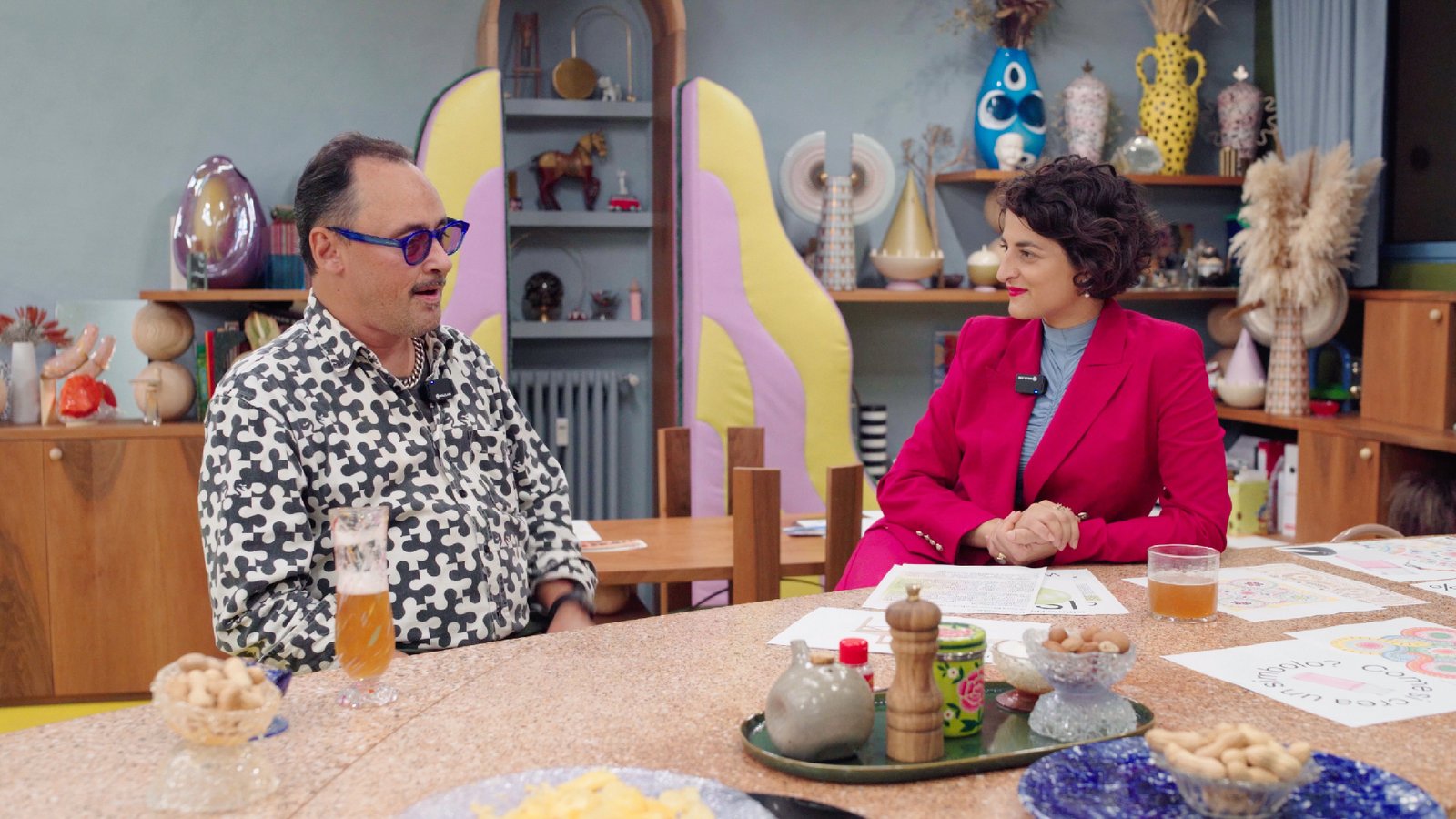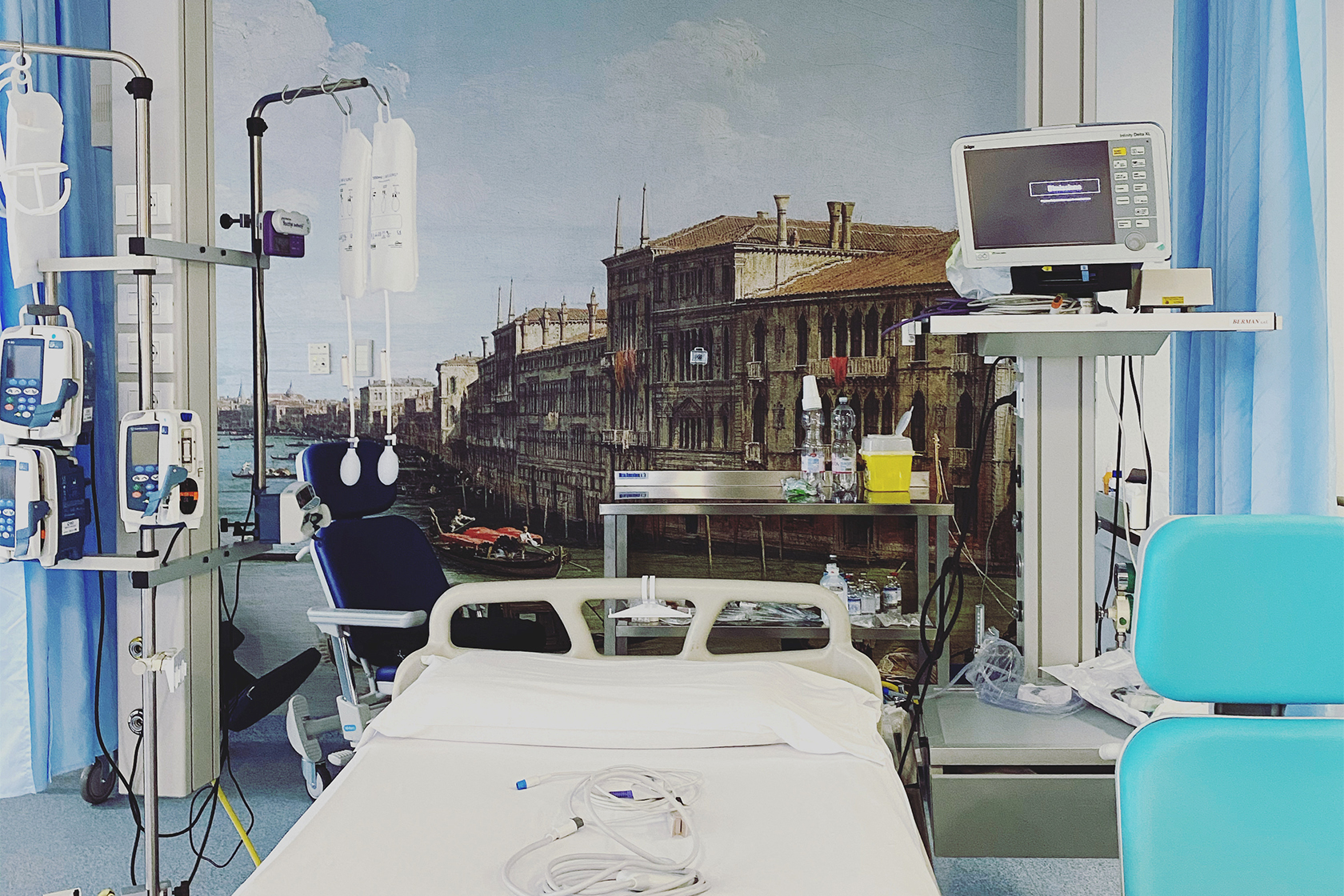
The Hospital Museum: A Cultural Revolution in Healthcare Spaces
Healing Through Beauty: The Role of Museums in Patient Well-Being
We all enter the hospital with at least a bit of anxiety, and we recognize our fragility, mortality, and humanity. Each of us needs Caravaggio, Hayez, or Raphael.
James Bradburne, Director of the Pinacoteca di Brera, at the press conference of Brera in Humanitas, March 23, 2023.
Museums have always been treasure troves of historical and artistic memory, capable of narrating the social and cultural transformations of a community and shaping the identity of a region. As early as the 18th century, with the opening of the Capitoline Museums under Pope Clement XII, these spaces began to open their doors to the public, laying the foundations for the idea of museums as a shared heritage accessible to all.
According to the updated 2022 definition by ICOM, a museum is “a permanent, non-profit institution serving society, conducting research, collecting, preserving, interpreting, and exhibiting tangible and intangible heritage. Open to the public, accessible, and inclusive, museums promote diversity and sustainability. They operate and communicate ethically and professionally, engaging with communities and offering diverse experiences for education, enjoyment, reflection, and the sharing of knowledge.”
In recent years, marked by profound technological and social transformations such as digitalization and the pandemic, the role of museums and their modes of engagement have undergone a significant redefinition. These events have prompted a reconsideration of traditional museum boundaries, turning challenges into opportunities. For example, audience development has gained new momentum through the digitization of collections, using technologies like 3D scanning, which have enabled museums to reach a broader and more diverse audience, overcoming physical and geographical barriers.
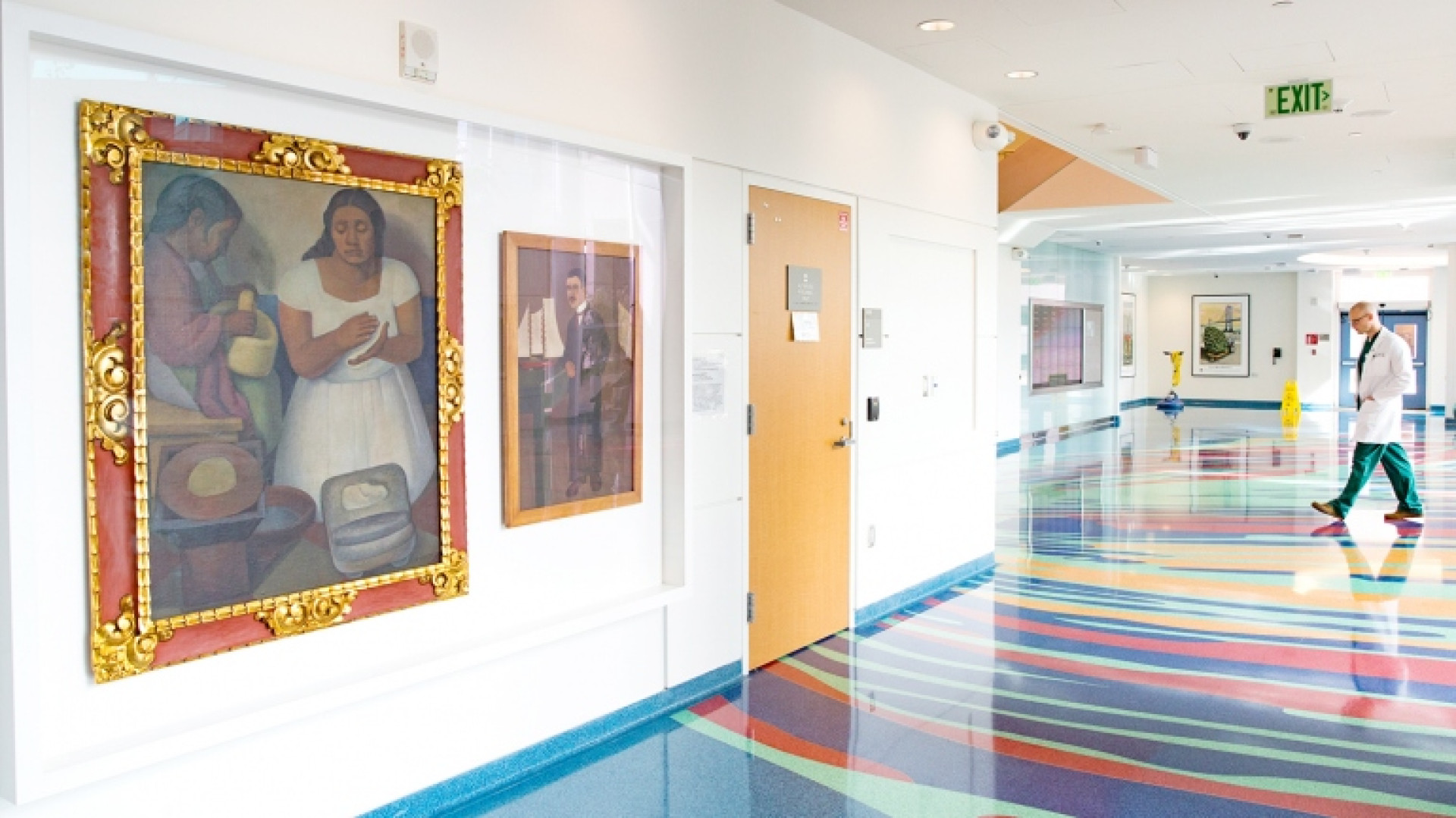 Diego Rivera's ‘La Tortillera’ and Frida Kahlo's portrait by Leo Eloesser, Zuckerberg San Francisco General Hospital, Photograph by Elisabeth Fall
Diego Rivera's ‘La Tortillera’ and Frida Kahlo's portrait by Leo Eloesser, Zuckerberg San Francisco General Hospital, Photograph by Elisabeth Fall
Museum directors and institutions have recognized the need for a paradigm shift, adopting innovative solutions that integrate technology and culture. Notable examples include the gamification initiatives at the National Archaeological Museum of Naples, the interactive game tables at Palazzo Barberini in Rome, and the cultural podcasts produced by the Pinacoteca di Brera. Today, the museum is evolving into a cultural ecosystem that seamlessly integrates into people’s daily lives, becoming an integral part of their experiences.
In some cases, even the very concepts of conservation, enhancement, and accessibility have been questioned, expanding their meanings and redefining their purposes.
It is precisely from this perspective of change that we embark on this new journey with Spaghetti Boost. We will explore the case of the hospital museum—an unprecedented synergy between art, science, and healthcare, where beauty becomes a tool for healing. Our focus will be on the project conceived and implemented by Humanitas Hospital: La Cura e la Bellezza ("Care and Beauty"), launched in 2018 in Bergamo and now expanding across Lombardy. This initiative creates connections with nearby cultural institutions, breathing new life into works of art and transforming hospital spaces into environments of comfort and distraction for patients, doctors, and caregivers.
In full alignment with the ICOM definition, the integration of culture into healthcare settings represents a significant evolution of the contemporary museum. Art, breaking free from its traditional showcases and sometimes dusty archives, enters spaces that are part of people’s everyday lives, making culture even more vibrant. As we have highlighted in our previous articles, visual art can be a valuable resource for promoting mental and physical well-being, alleviating patients’ symptoms, and improving the daily work experience of healthcare professionals.
La Cura e la Bellezza is an innovative project aimed at integrating art and culture into hospital settings to enhance the experience of patients, doctors, and caregivers. This initiative was born from the awareness that art can contribute to psychophysical well-being, providing moments of relief and connection, even in difficult situations.
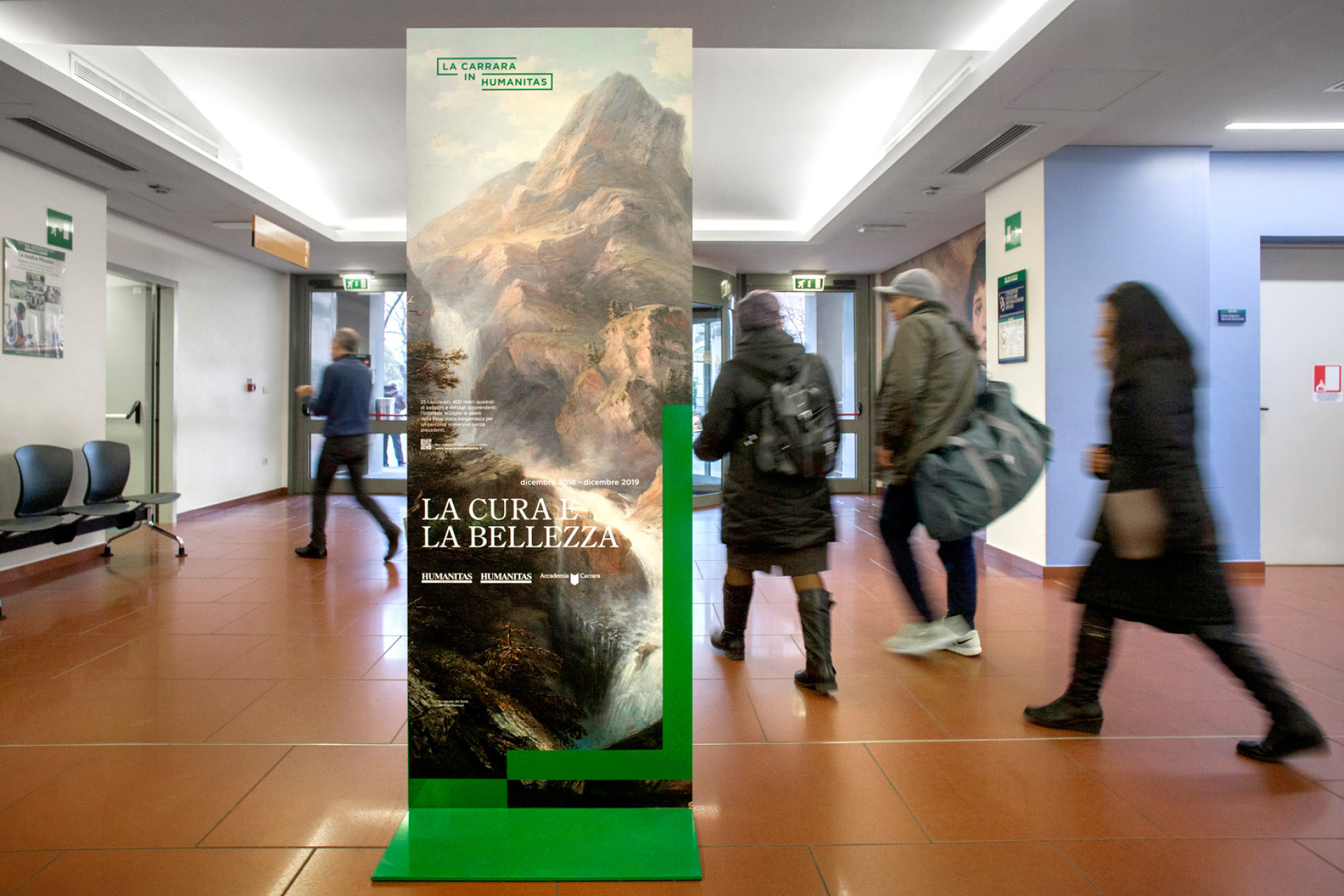 La Cura e la Bellezza, Lupo Burtscher, 2018
La Cura e la Bellezza, Lupo Burtscher, 2018
The project began at the Bergamo branch of Humanitas Gavazzeni, in collaboration with Accademia Carrara, one of Italy’s most prestigious art galleries. This partnership, established in 2017 when Humanitas joined the governance of the Fondazione Accademia Carrara, was designed to enhance, preserve, and promote the cultural heritage of the gallery. This collaboration led to the creation of the broader initiative Carrara in Humanitas, with La Cura e la Bellezza as one of its main milestones.
In Bergamo, the project took shape through the installation of 400 square meters of wallpaper featuring details and enlargements of 25 selected artworks from Accademia Carrara’s collection. These reproductions were chosen to symbolically represent the concept of care and healing. One particularly emblematic example is Saint Jerome Removing the Thorn from the Lion, attributed to an artist from the workshop of Rogier van der Weyden, which serves as the project’s symbolic image due to its delicacy and the skilled gesture it portrays.
In previous articles, we have discussed landscape art and abstract art, but here we find ourselves in front of Renaissance and modern artworks. Why? The answer lies in the personalization of artistic choices based on the customs and traditions of the local community. Italy is renowned for its modern art, and many Italians strongly identify with it. Bergamo is home to many workers who may not have extensive cultural knowledge but can recognize familiar landscapes in paintings, such as View of Piazza Grande in Bergamo by Costantino Rosa. They might not know the artist or the title of the work, but they recognize the locations depicted, which quickly fosters an emotional connection and can spark conversations with other patients or medical staff. The selection of artwork details is carefully evaluated in collaboration with the curators of Accademia Carrara. Since hospitals are secular spaces, it was crucial to choose gestures, expressions, and places that were not tied to religious themes, instead prioritizing themes of care and humanity.
Another example that supports these theoretical foundations is the installation of an enlarged detail from The Serio Waterfall by Andrea Marenzi. Recognizing this well-known natural site helped create connections among patients and provided a new perspective on their surroundings.
A particularly significant impact was observed in the intensive care unit. Dr. Albano, an anesthesiologist and resuscitator, moves patients’ beds in front of a reproduction of a Canaletto painting as they regain consciousness, allowing them to observe and admire it. Many patients, even in a semi-conscious state, described the artwork, and after recovering, expressed a desire to visit Venice to see the landscape in real life. This story highlights the humanization of care and the effort to establish a connection between patients and the outside world.
Thanks to internal surveys, employees actively participated in selecting the artworks and the exhibition areas, demonstrating significant engagement. The artworks were placed in high-traffic and welcoming areas such as entrances, corridors, waiting rooms, and common spaces to ensure accessibility and visibility. Alongside the enlargements, QR codes were positioned to provide information about the artworks and offer discount coupons for visiting the Accademia Carrara, strengthening the bond between the hospital and local cultural institutions.
Following the successful collaboration with the Accademia Carrara at the Humanitas Gavazzeni hospital in Bergamo, the La Cura e la Bellezza project expanded to the facilities in Rozzano and San Pio X, further reinforcing the synergy between the worlds of art and healthcare. Each hospital, in partnership with major Italian cultural institutions, developed a unique identity while maintaining the common goal of humanizing hospital environments through beauty and culture.
At the heart of Humanitas Rozzano, the art of the Pinacoteca di Brera found a new dimension through the third chapter of La Cura e la Bellezza: Brera in Humanitas, launched in 2020. This collaboration transformed corridors, waiting rooms, and shared spaces into a true open-air museum, where beauty intertwines with care. The installation featured twenty-three large-scale reproductions of details from fifteen masterpieces by some of history’s greatest artists, including Raphael, Caravaggio, Piero della Francesca, Canaletto, and Hayez. This innovative approach brought art into the hospital in an entirely new way.
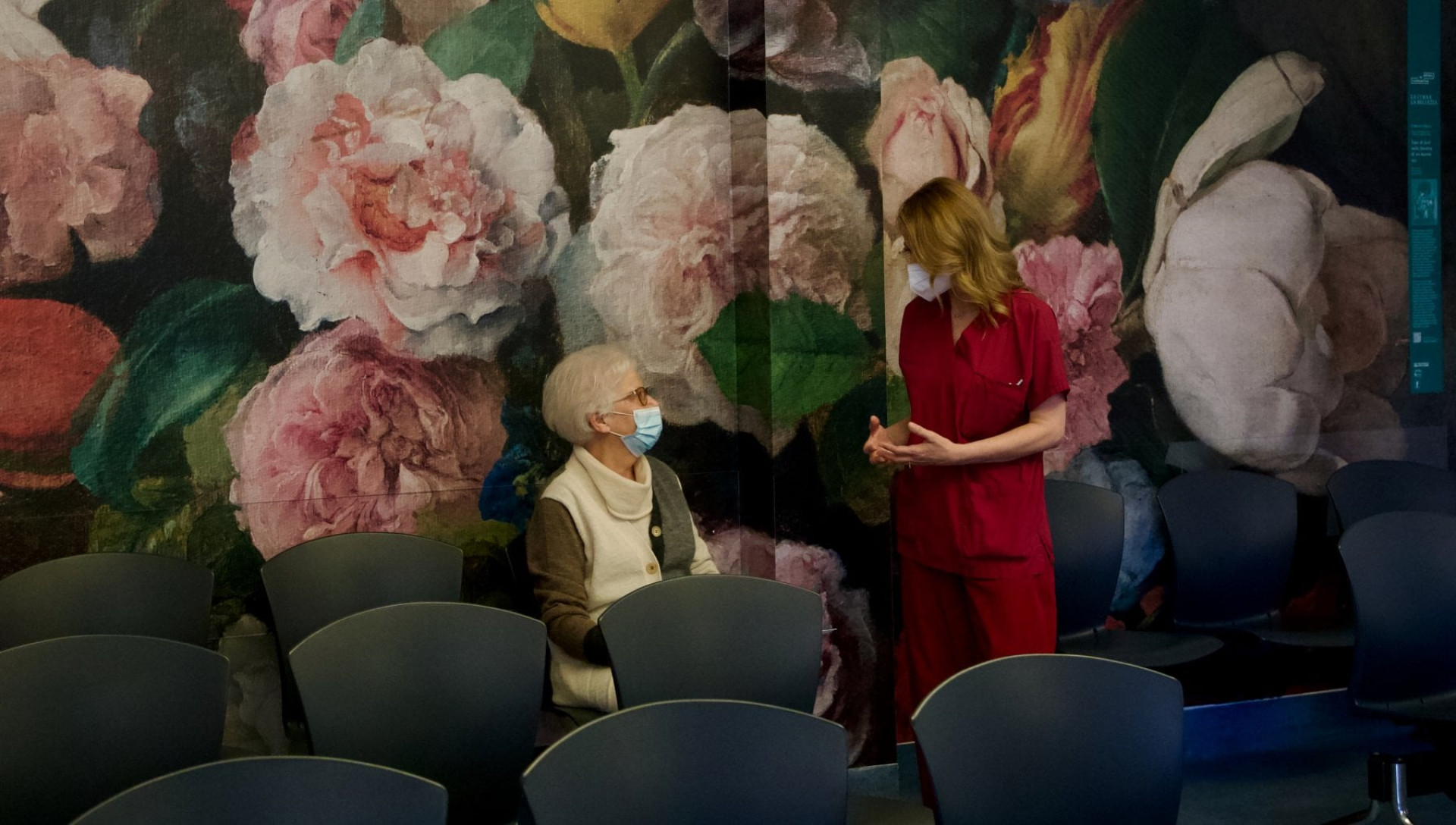 Francesco Hayez, Vase of flowers on the window of a harem, Waiting room, Brera in Humanitas
Francesco Hayez, Vase of flowers on the window of a harem, Waiting room, Brera in Humanitas
The artworks, reproduced in large formats covering 360 square meters, were strategically placed in high-traffic areas such as main corridors, entrance areas, and the busiest waiting rooms. Their arrangement was carefully designed to create a narrative path that guides patients and visitors, offering them moments of reflection and serenity. Among the most significant pieces is The Kiss by Romantic painter Francesco Hayez, positioned in a waiting room, where its emotional and intimate gesture serves as a symbol of comfort and closeness. Another impactful work is The Sermon of Saint Bernardino by Piero della Francesca, which, with its geometric lines and solemn composition, conveys a sense of order and harmony. Additionally, the face of Saint Sebastian, taken from Raphael’s painting, communicates gentleness and resilience, serving as a metaphor of hope for those facing difficult times.
Gianfelice Rocca, President of Humanitas, highlights how the hospital welcomes over 12,000 people daily—essentially forming a real community. In this context, La Cura e la Bellezza represents a meeting point between two seemingly distant worlds: a museum that opens up to the outside and a hospital that transforms into a vital hub of the territory. No longer a closed-off institution like a fortress, the hospital becomes a network that extends into homes and the social fabric, as demonstrated by home care initiatives.
This collaboration exemplifies an integrated approach in which beauty, compassion, empathy, and technology come together to build a sense of belonging and restore a direction to communities, offering not only medical care but also a renewed vision of the future.
The large-scale reproductions are accompanied by bilingual captions in Italian and English, displayed via a QR code next to each artwork. This QR code links to a dedicated webpage, allowing visitors to explore the history and cultural context of the pieces. This interactive approach enables everyone, even those unfamiliar with the art world, to feel engaged and connected. Many of the selected artworks depict Lombard landscapes or nature-related themes, creating an emotional bridge between the outside world and the hospital space. For example, Bellotto’s landscapes bring an unexpected light into the corridors of Rozzano, expanding perspectives toward serene and familiar scenery.
The ultimate goal is to transform the hospital experience into an invitation to continue engaging with art beyond its walls. Patients and caregivers, immersed in the beauty of the reproduced masterpieces, are encouraged to visit the Pinacoteca di Brera, shifting from indirect viewers to direct visitors. The idea is that encountering art in a hospital setting can spark curiosity, interest, and a desire to experience the original masterpieces in person—bridging the gap between therapeutic spaces and cultural enrichment.
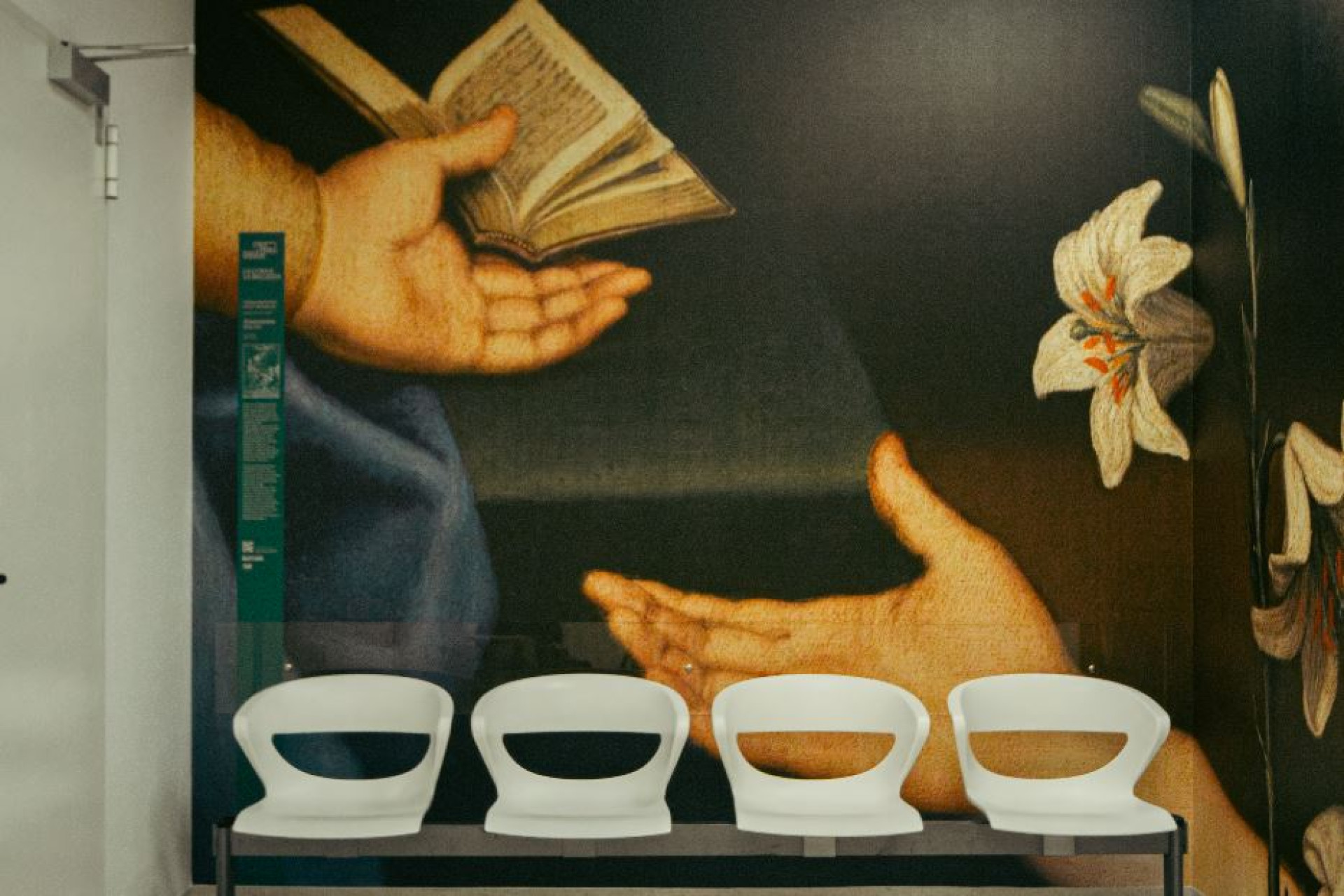 The Annunciation, Giovanni Battista Salvi known as Il Sassoferrato, Waiting Room, Pol di Pezzoli in Humanitas.
The Annunciation, Giovanni Battista Salvi known as Il Sassoferrato, Waiting Room, Pol di Pezzoli in Humanitas.
In addition to the physical arrangement of the artworks, the project includes a highly impactful digital component. Videos and multimedia content are displayed on hospital screens to narrate the initiative and showcase the original masterpieces housed in the Pinacoteca di Brera. Moreover, guided tours have been created—accessible both in person and remotely—offering in-depth historical and artistic insights through audiovisual content.
This dialogue between Humanitas and the Pinacoteca di Brera stands as a virtuous example of how art can transcend traditional boundaries to become an integral part of care environments, transforming hospitals into spaces of beauty and reflection. The project goes beyond making art accessible; it aspires to foster deep connections between hospital visitors and the artworks, igniting a journey of discovery that ideally continues within the Pinacoteca itself. This innovative approach lays the groundwork for future collaborations, such as the one with the Museo Poldi Pezzoli, further expanding the dialogue between culture, healthcare, and the local community. It demonstrates how beauty can become an essential part of the healing and well-being process.
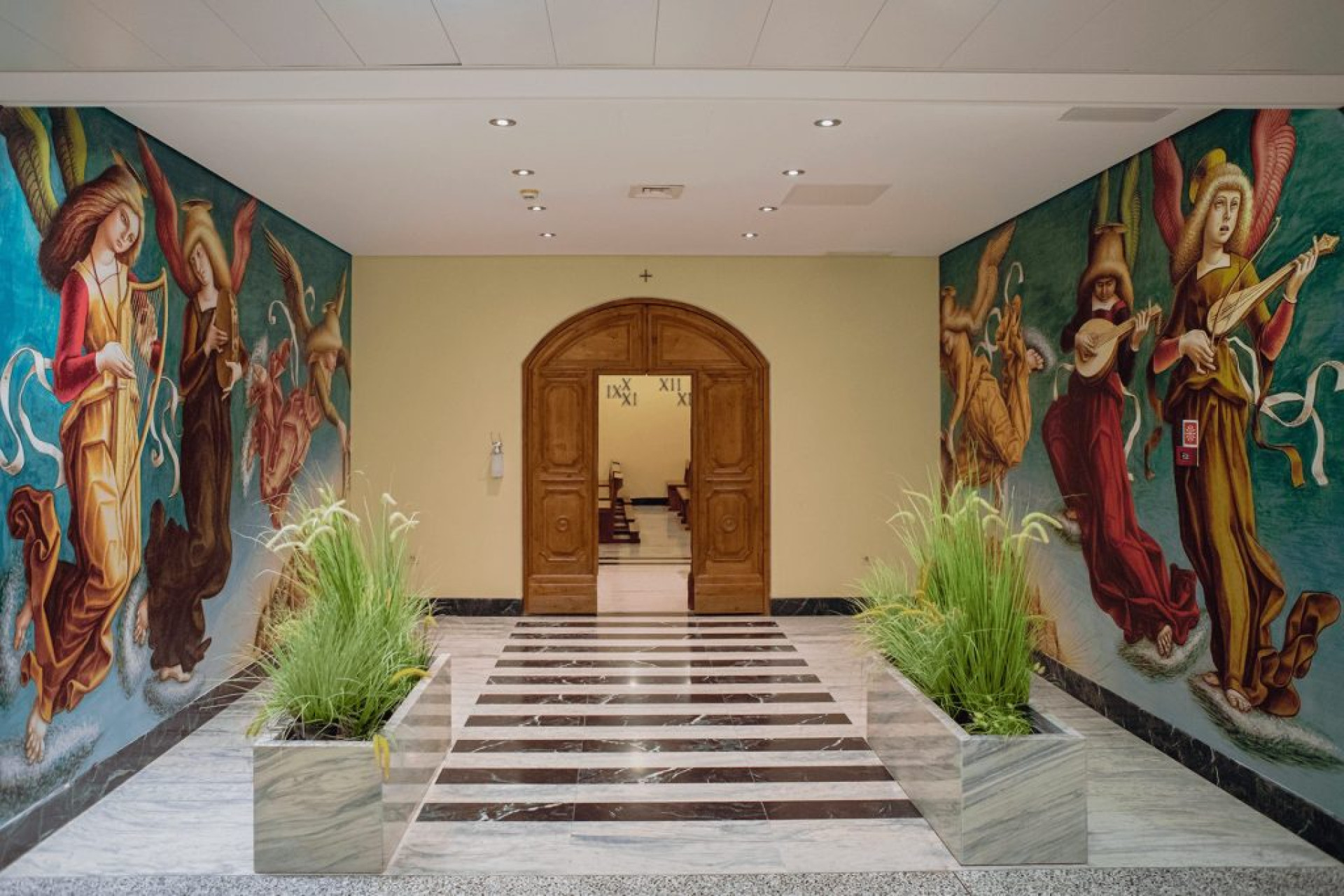 Coronation of the Virgin with the Trinity and Saints, Carlo Crevelli, Entrance, Brera in Humanitas
Coronation of the Virgin with the Trinity and Saints, Carlo Crevelli, Entrance, Brera in Humanitas
At the end of 2024, in the heart of Milan, Humanitas San Pio X inaugurated the third chapter of La Cura e la Bellezza, launching a collaboration with one of the city's most renowned house-museums: the Pol di Pezzoli. Thus, Poldi Pezzoli in Humanitas was born. Conceived with the same goal of humanizing hospital environments through art, the project introduced fourteen large-scale reproductions of iconic masterpieces from the museum's collection, covering 350 square meters of walls in strategic areas such as entrances, corridors, and waiting rooms.
The artworks selected for San Pio X align with the thematic focus on care, empathy, and humanity, chosen for their strong symbolic value. Among the most significant pieces is the famous Portrait of a Young Lady by Pollaiolo, whose refined and serene gaze welcomes visitors at the main entrance, creating an atmosphere of elegance and calm. Floral details and natural landscapes establish a visual connection to the beauty of the Lombard region, aiming to alleviate anxiety and the sense of isolation often associated with hospital stays. One of the most evocative works is the enlargement of Botticelli’s Madonna and Child, placed in the obstetric triage area, conveying a powerful message of motherhood and empathy.
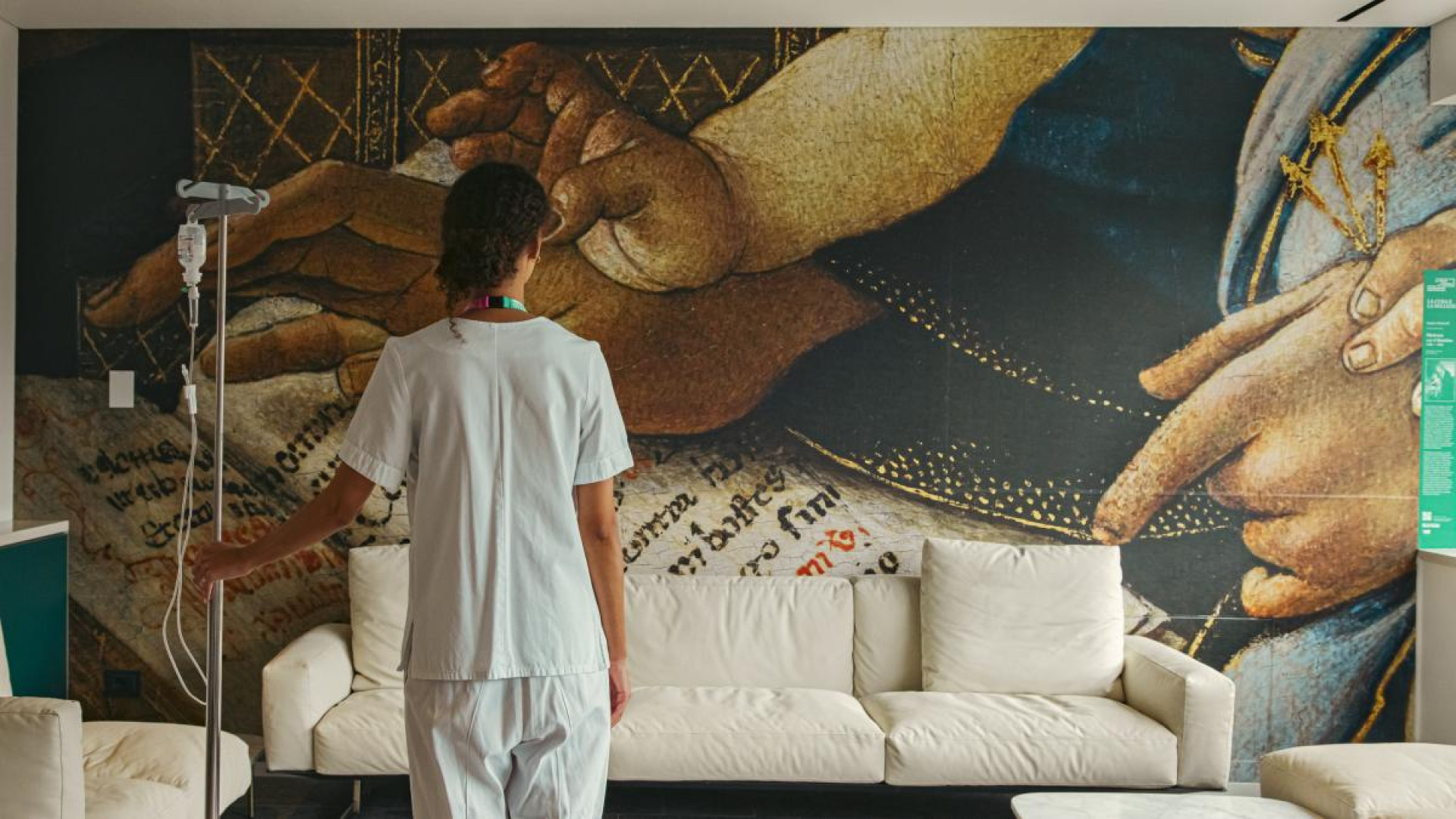 Madonna con Bambino, Sandro Botticelli, Waiting Room, Pol di Pezzoli in Humanitas
Madonna con Bambino, Sandro Botticelli, Waiting Room, Pol di Pezzoli in Humanitas
As in previous installations, each large-scale reproduction is accompanied by descriptive panels and QR codes, allowing visitors to explore the artistic and historical context of the pieces. Additionally, technology plays a key role in making art more accessible: patients can virtually explore the Poldi Pezzoli collection using multimedia devices available in the hospital or watch special video content that narrates the project and the museum's heritage.
The initiatives developed by Humanitas in Bergamo, Rozzano, and San Pio X exemplify how art can serve a therapeutic role, contributing to patients' psychological and physical well-being while offering comfort to healthcare staff and families. In each location, the synergy between healthcare and culture has fostered initiatives that, through the communicative power and evocative strength of art, transform hospitals into more welcoming and less alienating spaces. From the selected large-scale reproductions in Bergamo to the masterpieces from the Pinacoteca di Brera in Rozzano and the refined works of the Museo Poldi Pezzoli at San Pio X, every detail reflects the commitment to creating an environment that not only heals but also accompanies and reassures.
The La Cura e la Bellezza project is an extraordinary example of synergy between hospitals, museums, and communities, demonstrating how art can enhance the quality of life within the broader framework of humanizing healthcare and, consequently, the hospital experience. Through collaborations with the Accademia Carrara, the Pinacoteca di Brera, and the Museo Poldi Pezzoli, Humanitas has built a bridge between culture and healthcare, redefining the very concept of care—not only as clinical attention but also as care for emotions, memories, and hope.
These initiatives highlight the importance of bringing art beyond museum walls, making it an integral part of daily life, even in unexpected places like hospitals. Museums, in alignment with the ICOM definition, are not merely repositories of art but active agents in disseminating knowledge and cultural experiences beyond their physical spaces. They must live within the fabric of the community, fully engaging with society rather than passively awaiting visitors.
In an era where psychological and physical well-being are increasingly central to public discourse, projects like this demonstrate how culture can be a fundamental ally in creating a more humane and inclusive environment.
During hospital stays, particularly in a time when technological advancements and medical specialization have turned many fatal diseases into chronic conditions, patients often experience disorientation and detachment from their roots. Initiatives like this provide a vital anchor, helping individuals reconnect with a shared cultural tradition. They offer an immersive experience in beauty—one that restores a sense of orientation, comfort, and emotional connection.
After all, museums have curators, and hospitals have caregivers—a connection that surely is no coincidence!
A heartfelt thank you to Dr. Bombardiere, Scientific Director of Humanitas Gavazzeni, Dr. Debelli, spokesperson and former press officer of Humanitas Gavazzeni, and Professor Marini, Scientific and Innovation Director for Healthcare and Well-being at ISTUD, for their warm welcome, hospitality, and extraordinary dedication that has guided this journey for nearly three years.
Cover picture: Hospital room, Carrara in Humanitas, Canaletto (Antonio Canal) The Grand Canal from Ca' Foscari towards the Rialto Bridge
She is a cultural designer and doctoral candidate in Medical Humanities and Welfare Polices. Her common thread is caring for people's wellbeing, whether it is behind a stage with Grato Cuore, Rosetum Jazzfestival, a professorship at the Mohole School or research to rethink the design of healthcare environments through artistic interventions. With Spaghetti Boost he will address various topics on the combination of art and sanctity in international and national contexts, proposing how to concretely innovate it.
